- S.D. Eibar ready for maiden La Liga outing
- SD Eibar stengthen ahead of debut La Liga season
- Can ‘Super Mario’ live up to expectations in Madrid?
- MAN IN THE GROUND – Brentford 0 – 4 Osasuna
- Historic Basque derby welcomes S.D. Eibar to La Liga
- Munich to Madrid, via Brazil – Tony Kroos
- Rakitic in Spanish Switch
- Can Spain find redemption in Rio?
- Viva Espana! A season of redemption for Spanish football
- From the old to the new: who can fill the void in years to come for La Roja?
Hala Madrid! – The footballing Mecca of Charmartin
- Updated: 13 June, 2012
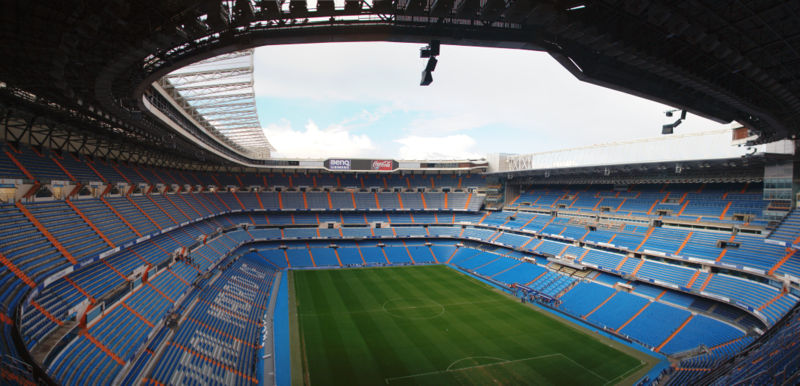
 EFE
EFE
Love them or loathe them, there is one inescapable fact about Real Madrid – they have a truly magnificent stadium. From its vantage point on Madrid’s prestigious Castellana, the Estadio Santiago Bernabeu is probably the world’s most recognisable sports arena.
Over the years, as Real Madrid have grown into a footballing institution, so the stadium has grown to symbolise the club’s power and whisper it quietly, elitism. Founded in 1902, The Bernabeu is the club’s seventh stadium, with the Estadio Chamartin the most famous and with a final capacity of 22,500, the largest of its predecessors.
This however, was not big enough for former player and club president Santiago Bernabeu. In 1944, Bernabeu signed off the purchase of five hectares of land that was sandwiched between the existing stadium and the Castellana. On this site, at a cost of 38 million pesetas, would be built the new Estadio Chamartin and Bernabeu himself broke the first ground in October 1944.
The new build was literally on Chamartin’s doorstep, so close that the north east corner encroached onto the new stadium’s ground plan. Work continued on the other three sides whilst Real finished off the 1944-45 season, before finally closing the stadium in May 1945.
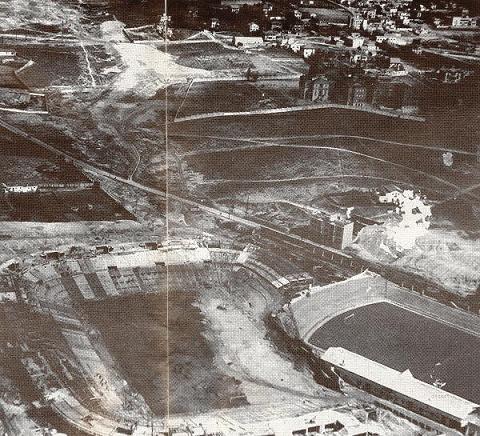 new stadium took a further 30 months to complete and so Real took up residence at Atletico’s Estadio Metropolitan. Finally, on 14 December 1947, the club entertained Belenenses in the inaugural match at the Nuevo Estadio Chamartin.
new stadium took a further 30 months to complete and so Real took up residence at Atletico’s Estadio Metropolitan. Finally, on 14 December 1947, the club entertained Belenenses in the inaugural match at the Nuevo Estadio Chamartin.
Designed by Luis Soler and Manuel Monasterio, the stadium featured three sides of open double-deck stands and a lower bank of uncovered terrace on the east side, where the old stadium had stood.
If Real Madrid were looking for an immediate on-field impact at their new stadium they were to be disappointed. At the end of the 47-48 season, the club finished eleventh, its lowest ever final placing.
Maybe Bernabeu sensed that the club was about to take off, for little more than five years after opening the stadium, the next stage of redevelopment began.
In 1953, the shallow bank of terracing was removed and in its place grew an immense open stand, which featured an anfiteatro. This was flanked on either side by two rectangular towers. The new stand was opened on 19 June 1954, two months after the first league title of the Santiago Bernabeu era was secured.
Whilst this took the capacity to 120,000, it wasn’t the dimensions of the stadium, but rather its understated grace and refined lines that set it apart. In recognition of Bernabeu’s dedication to the club, the stadium was renamed in his honour on 4 January 1955. The stadium saw little change over the next 25 years.
Sadly, Santiago Bernabeu passed away in June 1978 by which time the stadium had been selected to host the 1982 World Cup Final. However, the once graceful stadium now required major surgery and this was to come at a cost of 700 million pesetas, with Real footing three quarters of the bill.
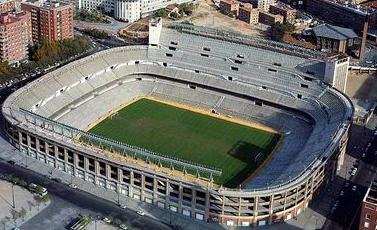 The re-fit included the installation of more seats which reduced the capacity to 90,000 and the re-facing and strengthening the façade of the ground, in order to support a new cantilevered roof that would cover three sides of the stadium.
The re-fit included the installation of more seats which reduced the capacity to 90,000 and the re-facing and strengthening the façade of the ground, in order to support a new cantilevered roof that would cover three sides of the stadium.
It was a major piece of construction, accounting for half the overall cost. Using lightweight cement and fibreglass panels, it swept round to meet the open, but still majestic east side.
High, behind each goal, the roof fascia appeared to morph, so that video screens could be accommodated. The next significant phase of redevelopment arrived in the early 90’s when a third tier was added to the north, south & west sides.
Work commenced in February 1992 and saw the existing roof removed, piece by piece for safekeeping and huge pre-fabricated sections added to the stadiums new outer skin. To access this new level, four cylindrical towers were erected in each corner of the stadium. As each section was complete, the existing roof struts & panels were repositioned, along with new sections in the corners.
The work was concluded in May 1994 at a cost of 5 billion pesetas and increased capacity to 110,000. Four years later however, the stadium became an all-seat arena with a reduced capacity of 75,328.
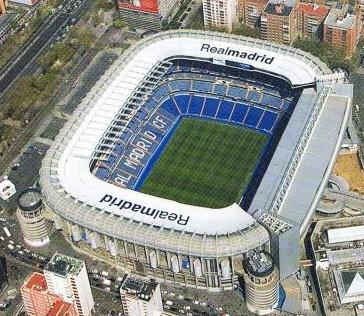 The reign of president Florentino Perez bought about further change and with a budget of 127 million euros, the club set about expanding and improving the east side. The majority of the cost went on a new gallery tier and roof, thus enclosing the stadium for the first time.
The reign of president Florentino Perez bought about further change and with a budget of 127 million euros, the club set about expanding and improving the east side. The majority of the cost went on a new gallery tier and roof, thus enclosing the stadium for the first time.
Other improvements saw the dismantling of the two towers with new VIP boxes constructed in their place and new media facilities. Following the completion in 2006, the stadium’s capacity increased to 80,354.
On 14 November 2007, a month before its 60thanniversary, UEFA announced that the stadium had achieved Elite status. A visit to the stadium brings mixed emotions.
Any football fan will be in awe-struck by the simple fact that this is home to the most successful club side in football history. Fans of architecture will undoubtedly be impressed by its complicated structure.
Despite this however, any visit is a rather clinical experience. You are reminded at every turn, either directly or subliminally that this is a special, elite club. Real Madrid polarise opinion at home and abroad. One man’s elite aristocrat is another man’s arrogant poser.
There is another view however. Sure from time to time, you shake your head in disbelief at the club’s antics, but it is a reasonable price to pay for the history and the remarkable monument that is the Estadio Santiago Bernabeu.
_____________________________
For more in-depth insight on the footballing stadiums of Spain, visit Estadios de Futbol en España
Follow @icentrocampista

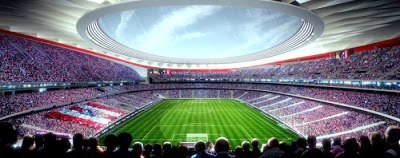
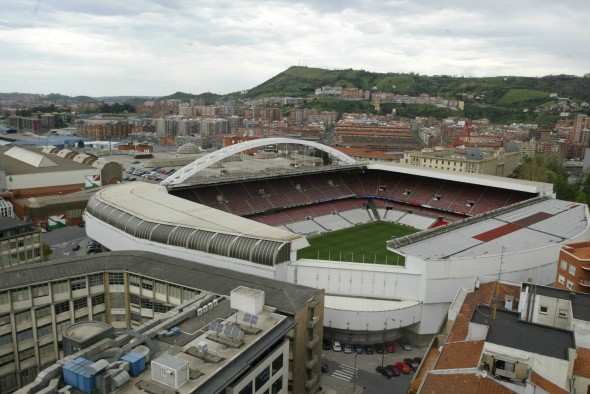
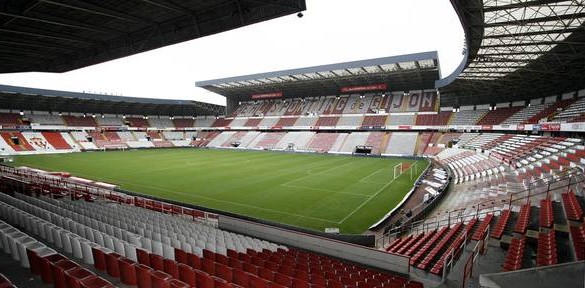


You must be logged in to post a comment Login